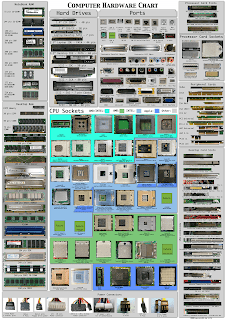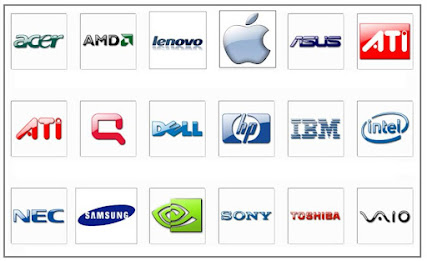Computer hardware
What exactly is computer hardware?
Computer hardware is a catch-all term for any of the physical components of a digital or analog computer. The term hardware distinguishes the tangible aspects of a computing device from software, which is made up of written, machine-readable instructions or programs that tell physical components what to do and when to do it.
Hardware and software work in tandem. Only when both hardware and software work properly together can a computing device function efficiently and produce useful output.
Computer hardware is classified as either internal or external components. Internal hardware components are those required for the computer to function properly, whereas external hardware components are those attached to the computer to add or enhance functionality.
XEM THÊM :
Luật chơi bài Xì Dách Online
What exactly are computer hardware components?
Internal components process or store the instructions delivered by the program or operating system collectively (OS). These are some examples:
Motherboard. This is a printed circuit board that houses the central processing unit (CPU) and other important internal hardware and serves as the central hub through which all other hardware components communicate.
CPU. The CPU is the computer's brain, processing and executing digital instructions from various programs; the CPU's clock speed determines the computer's performance and efficiency in data processing.
RAM. RAM – or dynamic memory RAM is temporary memory storage that makes information immediately accessible to programs; RAM is volatile memory, which means that stored data is erased when the computer is turned off.
The hard drive. Hard disk drives are physical storage devices that store both permanent and temporary data in various formats, such as programs, operating systems, device files, photos, and so on.
Solid-state storage (SSD). SSDs are solid-state storage devices that use NAND flash memory technology to store data. Because SSDs are non-volatile, they can safely store data even when the computer is turned off.
The optical drive. Optical drives are typically found in a drive bay on the device; they allow the computer to read and interact with nonmagnetic external media such as compact disc read-only memory or digital video discs.
The heat sink. This is a piece of passive hardware that draws heat away from components in order to regulate/reduce their temperature and ensure that they continue to function properly. A heat sink is typically installed directly atop the CPU, which generates the most heat among internal components.
Processing unit for graphics. This chip-based device handles graphical data and frequently serves as an extension to the main CPU.
NIC (Network Interface Card) (NIC). A network interface card (NIC) is a circuit board or chip that allows a computer to connect to a network; also known as a network adapter or local area network adapter, it typically supports Ethernet networks.
Internal hardware includes other computing components such as USB ports, power supplies, transistors, and chips.
The computer hardware diagram below depicts typical internal computer hardware components.
What do you mean by external hardware components?
External hardware components, also known as peripheral components, are items that are frequently connected to the computer from the outside to control either input or output functions. These hardware devices are intended to either provide instructions to the software (input) or to render the results of its execution (output) (output).
The following are examples of common input hardware components:
Mouse. A mouse is a hand-held pointing device that allows you to move a cursor around a computer screen and interact with objects on the screen. It could be either wired or wireless.
Keyboard. A keyboard is an input device with a standard QWERTY key layout that allows users to enter text, numbers, and special characters.
Microphone. A microphone is a device that converts sound waves into electrical signals and allows computer-based audio communications to take place.
Camera. A camera captures visual images and streams them to a computer or a network device via a computer.
Touchpad. A touchpad is an external or built-in input device used to control the pointer on a display screen. It is usually used as an alternative to an external mouse.
USB memory stick A USB flash drive is a removable external storage device that uses flash memory and connects to a computer via a USB port.
Memory stick. A memory card, also known as a CompactFlash card, is a type of portable external storage media used to store media or data files.
Joysticks, styluses, and scanners are examples of input hardware components.
The following are some examples of output hardware components:
Monitor. A monitor, similar to a TV screen, is an output device that displays information, documents, or images generated by a computing device.
Printer. Printers convert computer-generated electronic data into printed material.
Speaker. A speaker is a type of external audio output device that connects to a computer to produce sound.
Earbuds, headphones, and earphones These devices, like speakers, produce audio that is only audible to a single listener.
Software vs. hardware
Hardware refers to the physical components or delivery systems of a computer that store and execute the written instructions provided by software. The software is the device's intangible component that allows the user to interact with the hardware and command it to perform specific tasks. The following are examples of computer software:
Operating systems and associated utilities; programs that control specific computer functions; and applications that typically perform operations on user-supplied data.
Because virtual keyboards are not physical, they are also considered software on mobile devices and laptop computers.
Because software and hardware are interdependent in order for a computer to produce useful output, software must be designed to work properly with the hardware.
Malicious software, or malware, such as viruses, Trojan horses, spyware, and worms, can have a significant impact on computer programs and a system's operating system. Malware, on the other hand, has no effect on hardware.
Malware, on the other hand, can disrupt the system in other ways. It can, for example, consume a large amount of computer memory or even replicate itself to fill the device's hard drive. This causes the computer to slow down and may also prevent legitimate programs from running. Malware can also prevent users from accessing files stored on the computer's hard drive.
READ ARTICLES :
https://technol0gyblog.blogspot.com/2022/07/ideas-for-how-to-organize-digital-files.html
https://technol0gyblog.blogspot.com/2022/07/cryptocurrency-myths-every-student.html
https://n3wst0day.blogspot.com/2022/07/myanmars-junta-expands-use-of-chinese.html
https://n3wst0day.blogspot.com/2022/07/bongbong-marcos-urged-reactivation-of.html
https://enterta1nmentguide.blogspot.com/2022/07/what-happens-now-that-elon-musk-wants.html




Nhận xét
Đăng nhận xét